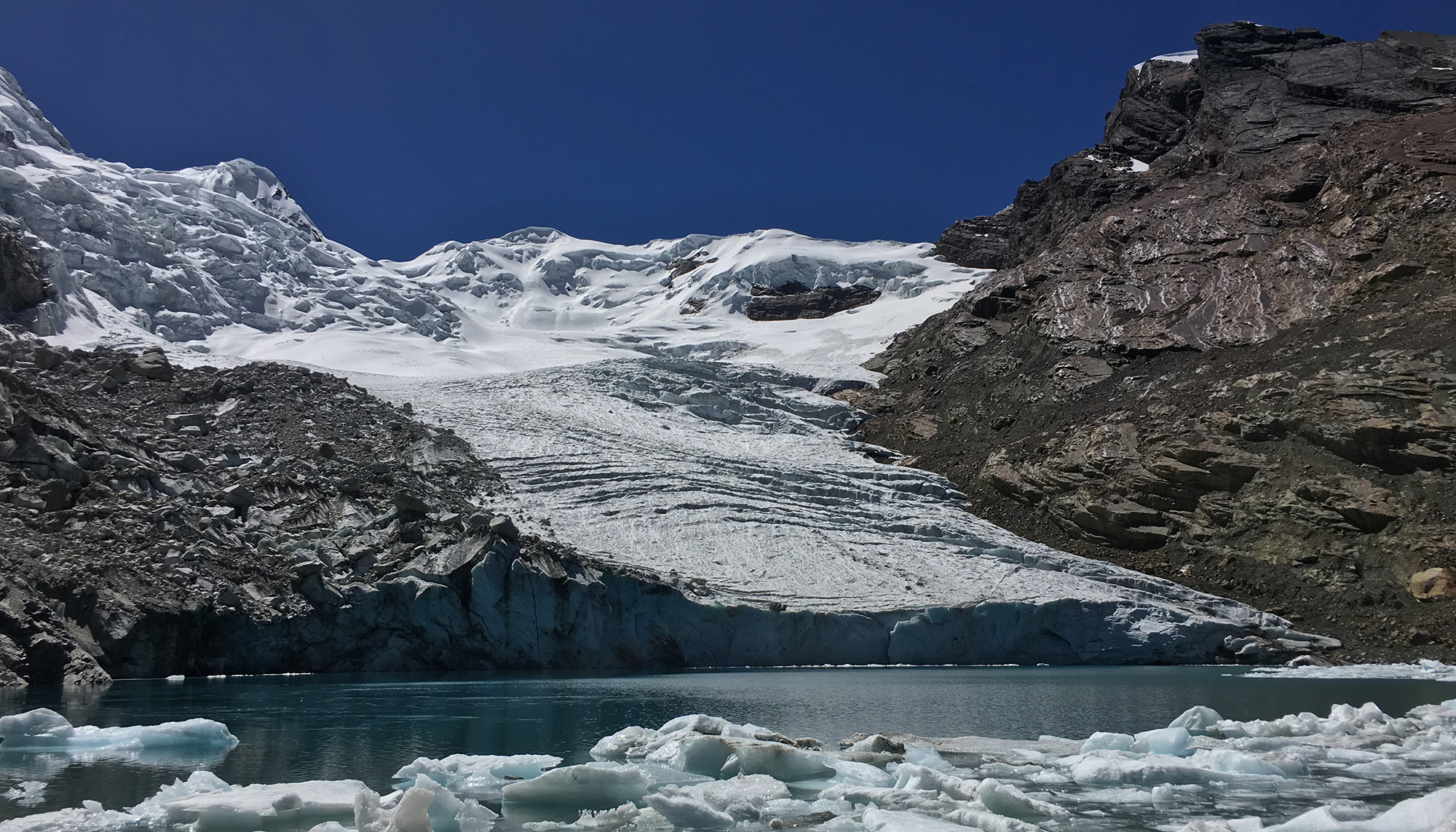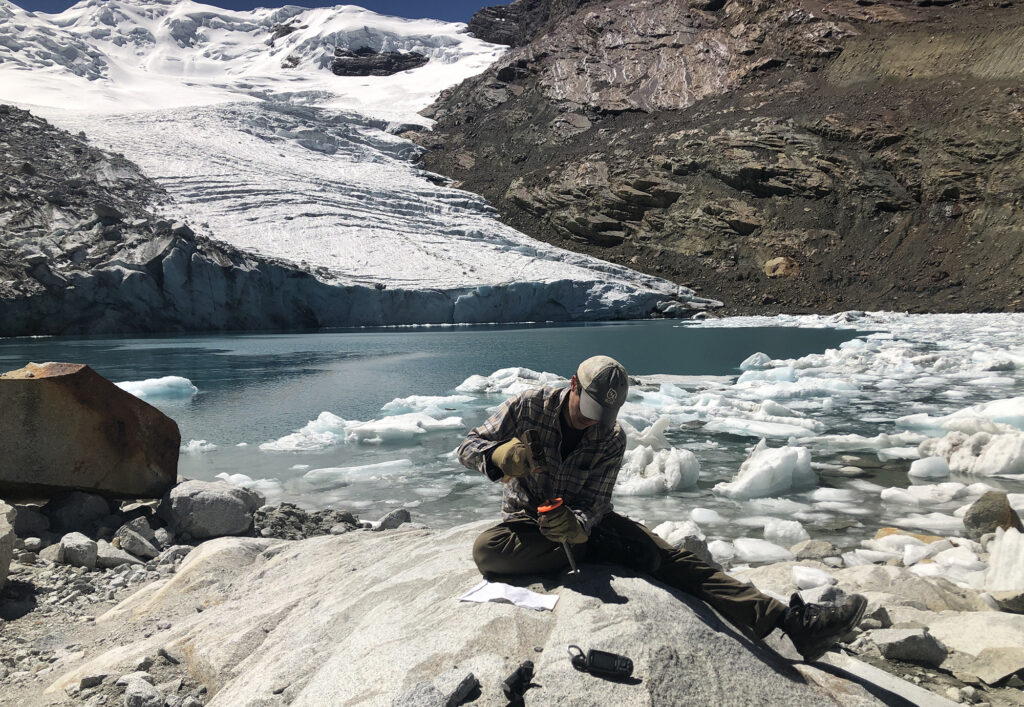Size of tropical glaciers at lowest point in at least 11,000 years
The high Andes mountains host many glaciers. Study shows four of them have shrunk to a size not seen since the rise of human civilization.

Emilio Mateo, Aspen Global Change Institute
August 1, 2024
Glaciers are retreating around the world as the planet warms, but scientists have debated how severe the shrinkage is compared to periodic glacial advances and retreats since the end of the Ice Age about 12,000 years ago.
A new study of four glaciers dotting the high Andes in Colombia, Peru and Bolivia shows that, at least in the tropics, the retreat is unprecedented. The glaciers are smaller than they have been in more than 11,700 years, the beginning of a warm interglacial period geologists refer to as the Holocene.
According to Andrew Gorin, a University of California, Berkeley, graduate student and first author of the study, published today (Aug. 1) in Science, this likely means that the glaciers are smaller than they have been in the past 125,000 years, before the most recent glacial era began 120,000 years ago. The data, however, aren’t precise enough to allow extrapolation that far into the past.
“The complexities of our technique are such that we don’t have the resolution to see past about 12,000 years ago,” said Gorin, who began the research as a master’s degree student working with study leader Jeremy Shakun at Boston College. “However, a reasonable person might infer that these glaciers are actually now smaller than they have ever been since at least the last interglacial period, about 125,000 years ago.”
Gorin said that 99% of all tropical glaciers occur in the Andes, where rising global temperatures have a stronger effect on glacial size than the small seasonal temperature fluctuations typical around the equator. As a result, tropical glaciers give a clearer picture of the impact of climate change.
The new findings are thus a sign that more of the world’s glaciers are likely retreating far faster than predicted, possibly decades ahead of earlier predictions.
“Given that modern glacier retreat is mostly due to rising temperatures — as opposed to less snowfall or changes in cloud cover — our findings suggest the tropics have already warmed outside their Holocene range and into the Anthropocene,” said Shakun, a paleoclimatologist. “This is the first large region of the planet where we have strong evidence that glaciers have crossed this important benchmark – it is a ‘canary in the coal mine’ for glaciers everywhere.”

Evan Vega,The Ohio State University
The warming Holocene saw the birth of civilization as agricultural and commercial activity emerged worldwide with the retreat of glacial ice sheets. The Anthropocene is a term given by many scientists to a new era in which humans are the main driver of global change, including climate change.
An earlier study by Shakun and an international team of scientists showed that glaciers in the Northern Hemisphere, from Alaska to California, grew steadily until the Industrial Revolution, when they began to decline. For the current study, the team traveled to Colombia, Peru and Bolivia to measure the chemistry of bedrock only recently uncovered in front of four melting glaciers spanning the tropical Andes. They focused on two rare isotopes — beryllium-10 and carbon-14 — that build up in bedrock surfaces when they are exposed to cosmic radiation.
“By measuring the concentrations of these isotopes in the recently exposed bedrock we can determine how much time in the past the bedrock was exposed, which tells us how often the glaciers were smaller than today — kind of like how a sunburn can tell you how long someone was out in the sun,” Shakun said.
Surprisingly, they found no “sunburn.”
“We found essentially no beryllium-10 or radiocarbon-14 in any of the 18 bedrock samples we measured in front of four tropical glaciers,” Gorin said. “That tells us there was never any significant prior exposure to cosmic radiation since these glaciers formed during the last Ice Age.”
Gorin investigated an alternative hypothesis, that the glaciers had scoured away exposed rock containing these isotopes, but dismissed this as an explanation. The glaciers would have had to remove some 10 feet of rock over 5,000 years to explain the isotopes’ absence in exposed rock today — a very unlikely scenario.
Shakun and his colleagues plan soon to publish results from their study of southern South America glaciers.
“Once we do that, then these studies can all be put together into a global perspective on the current state of glacier retreat,” he said.
The research is funded by the National Science Foundation (EAR 1805620). Shakun and Gorin partnered with researchers from the University of Wisconsin-Madison and Tulane University in Louisiana to analyze the rock samples.
Related Information
- Recent tropical Andean glacier retreat is unprecedented in the Holocene (Science)
- Boston University press release